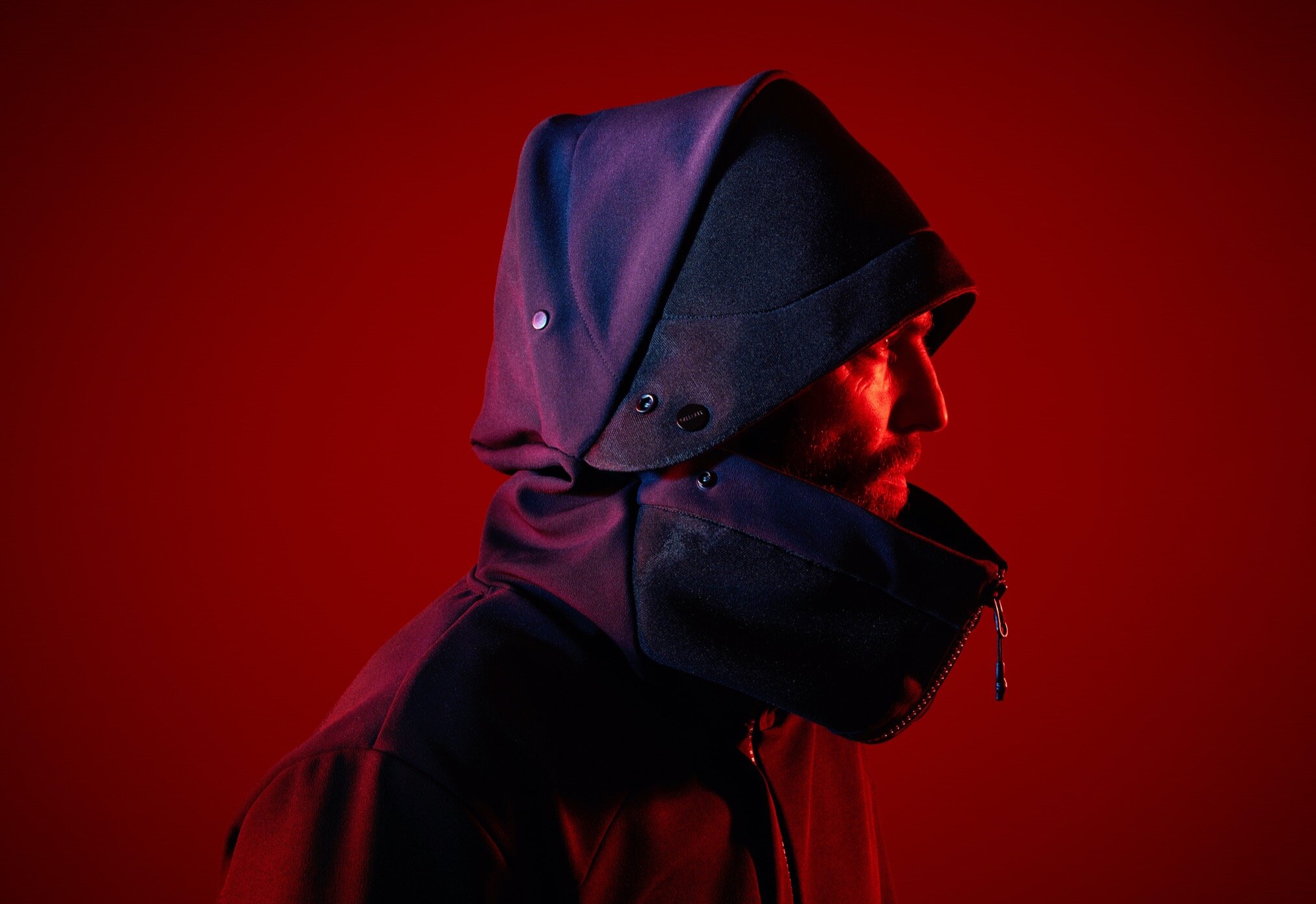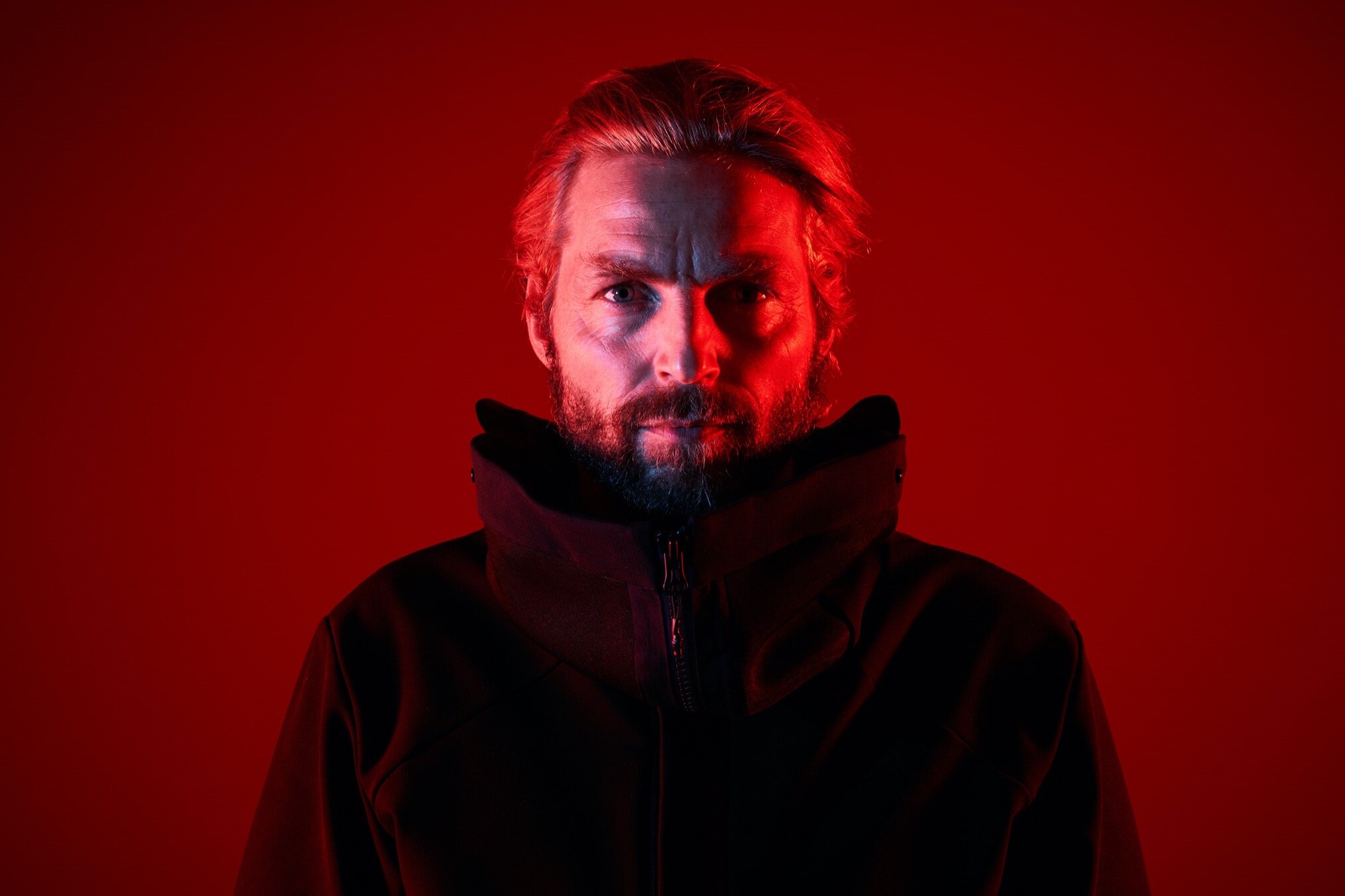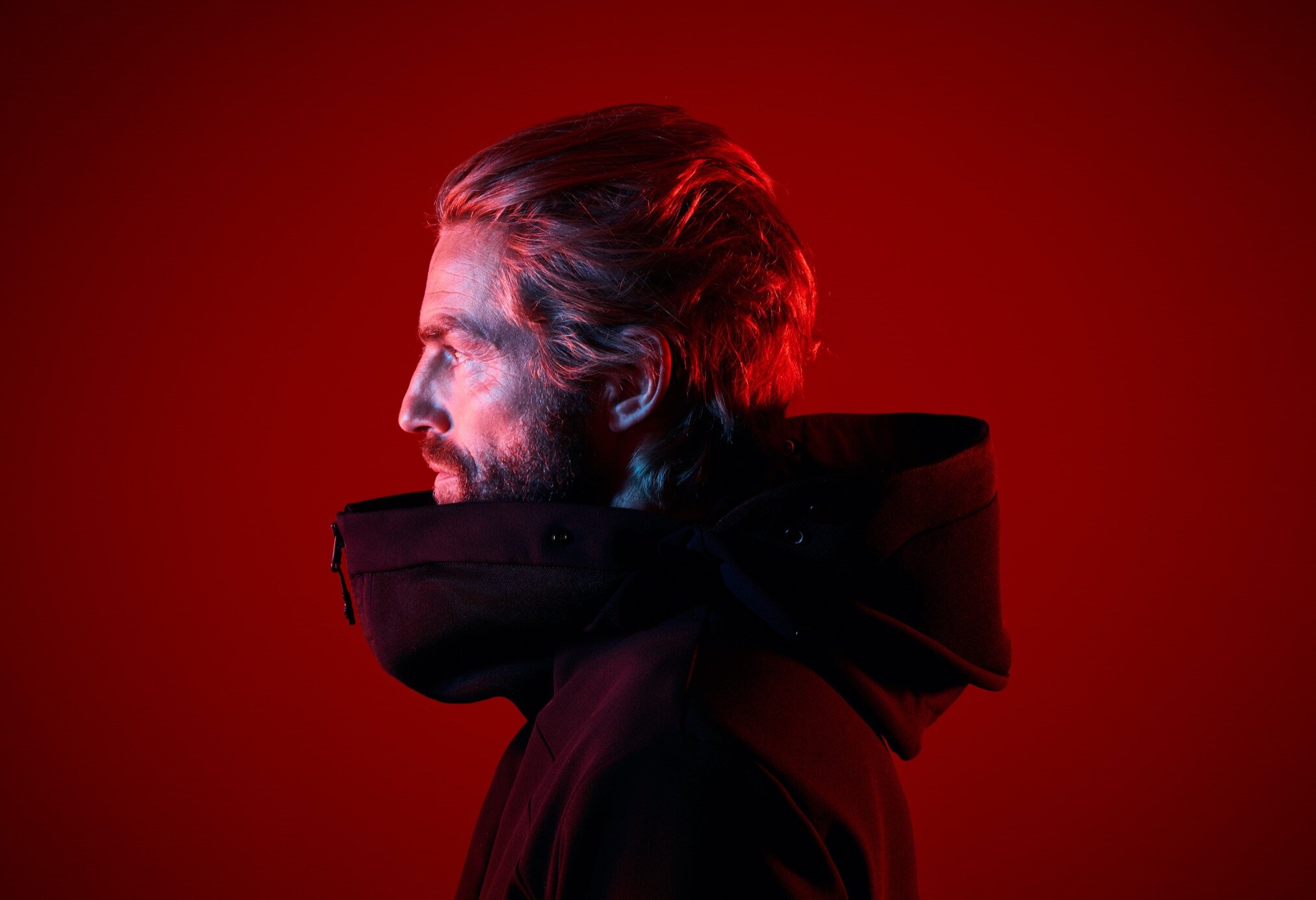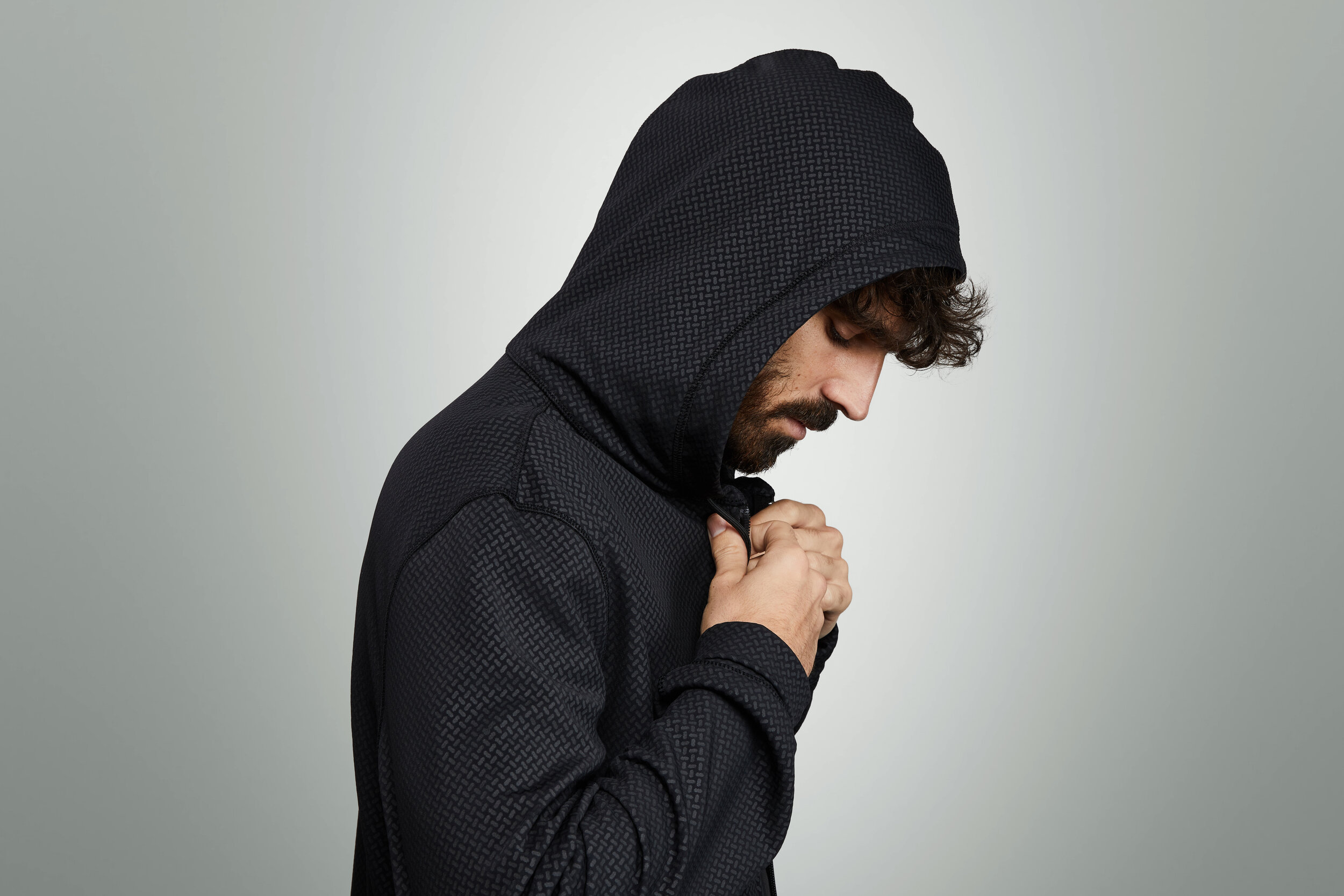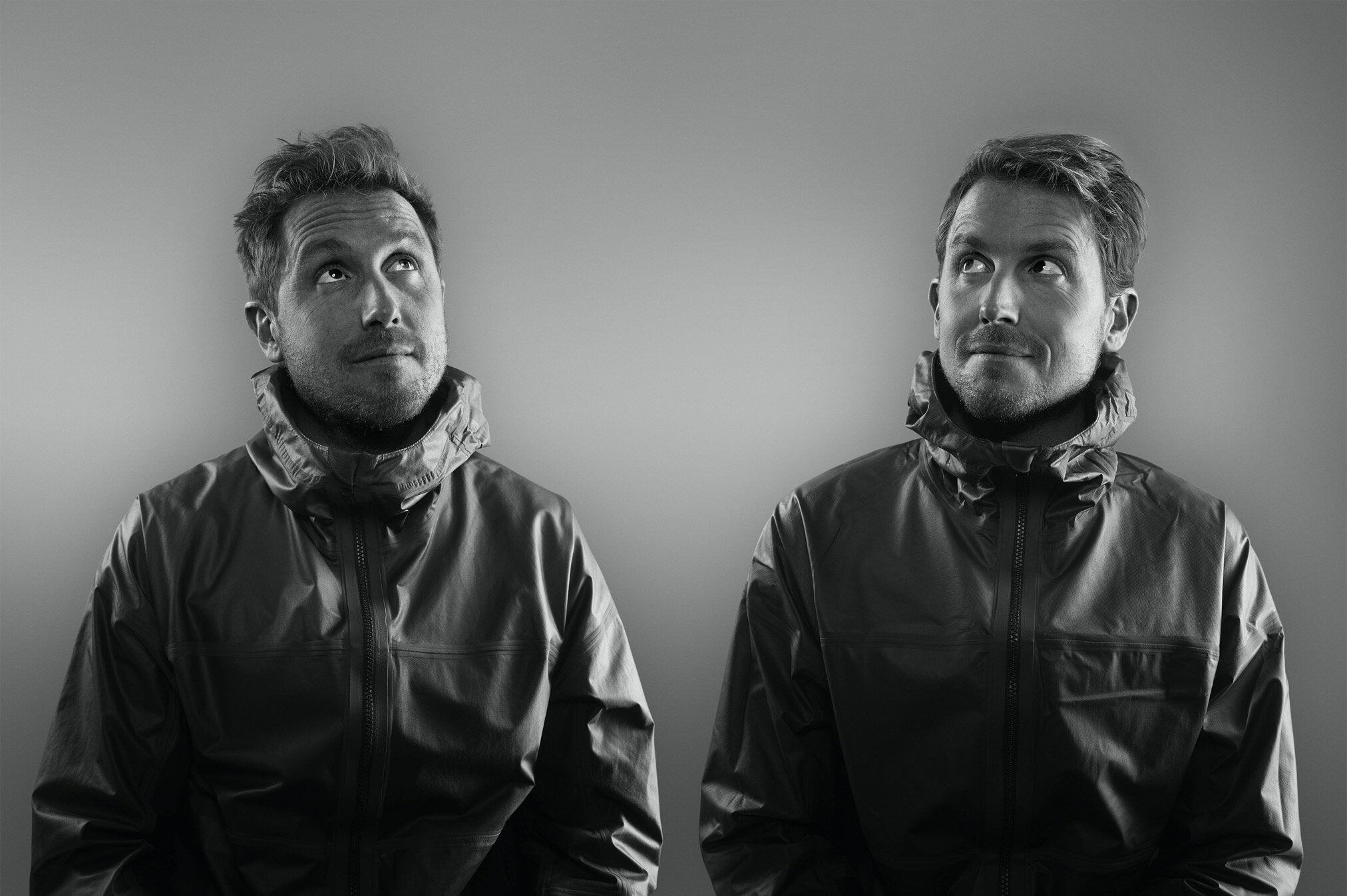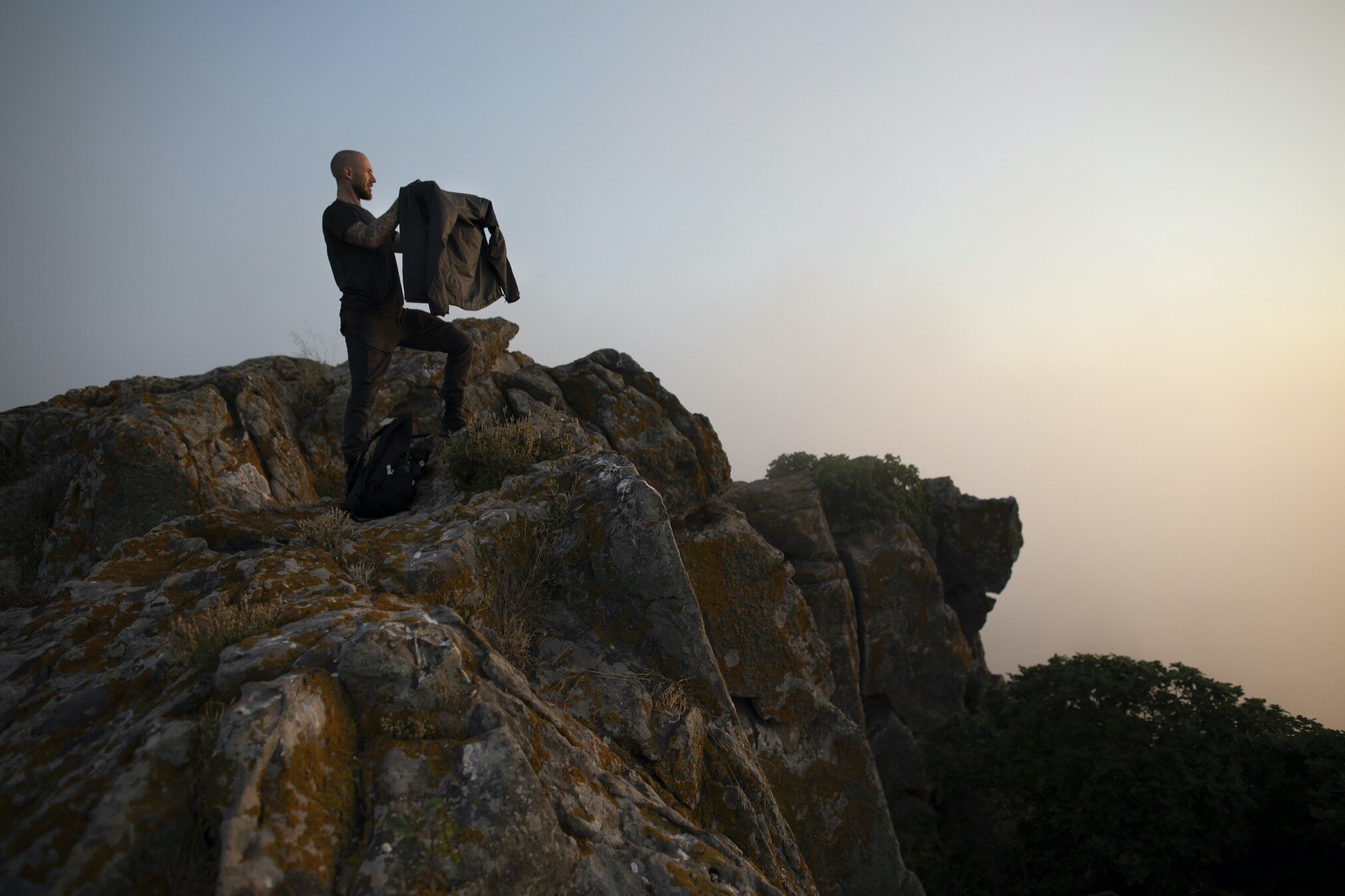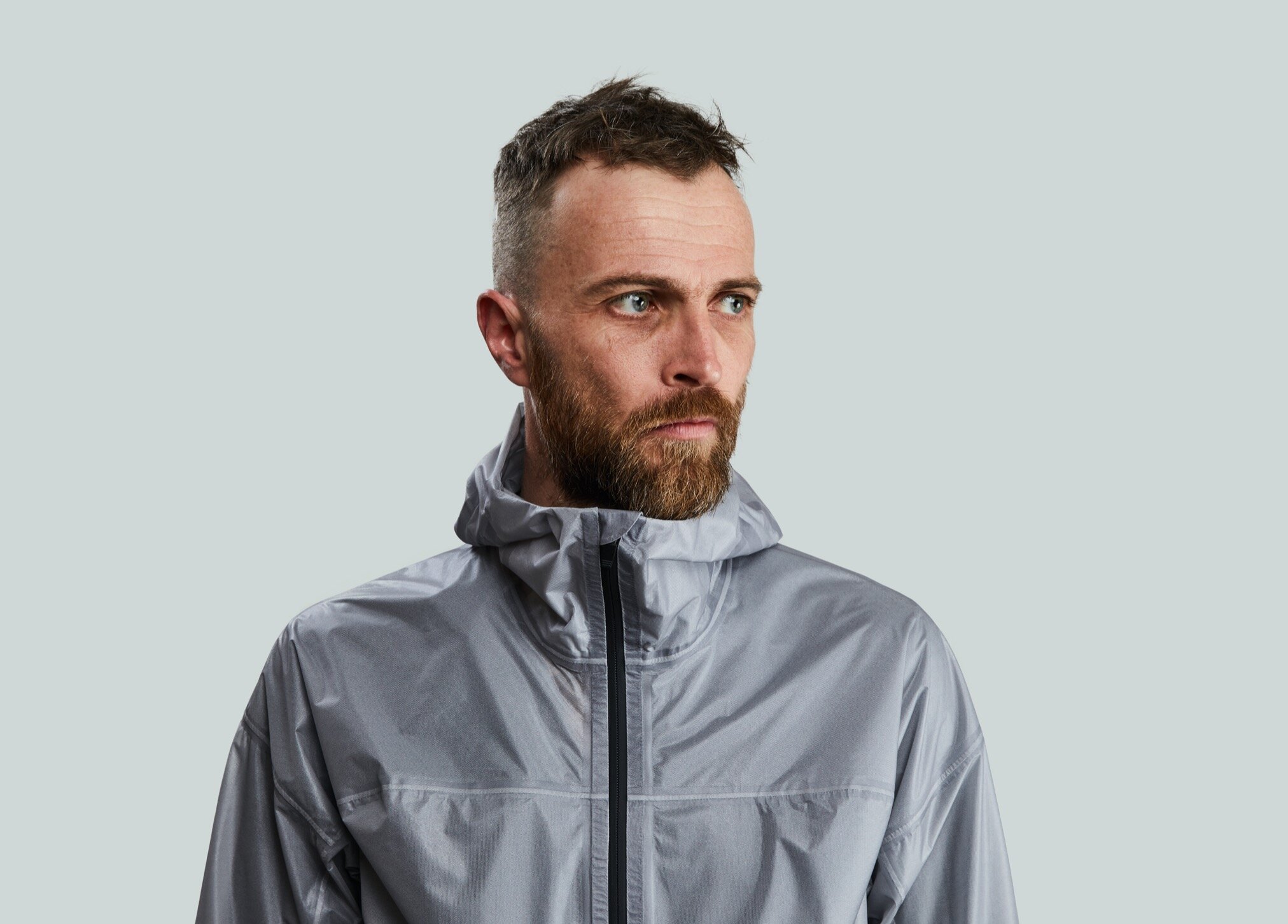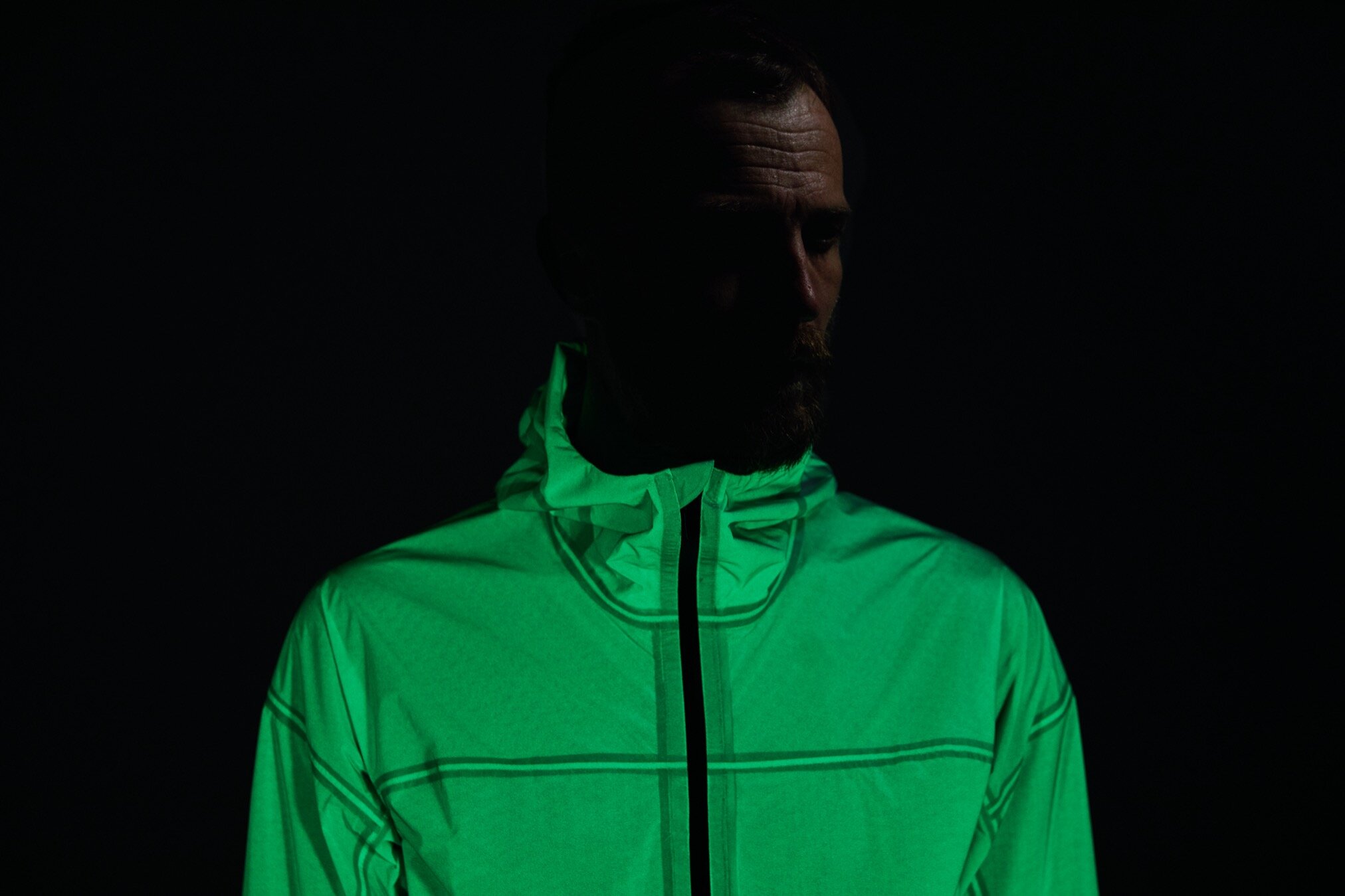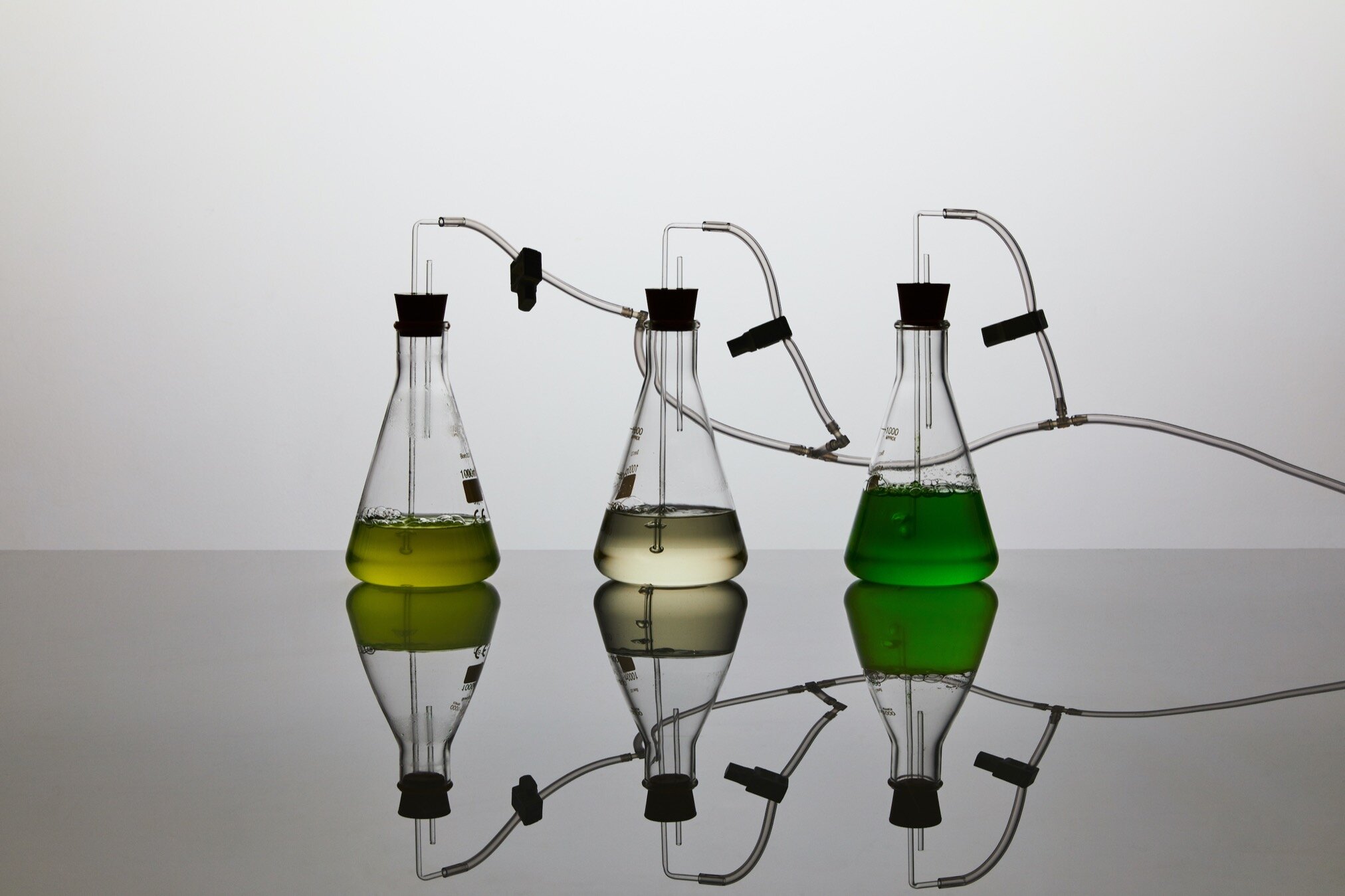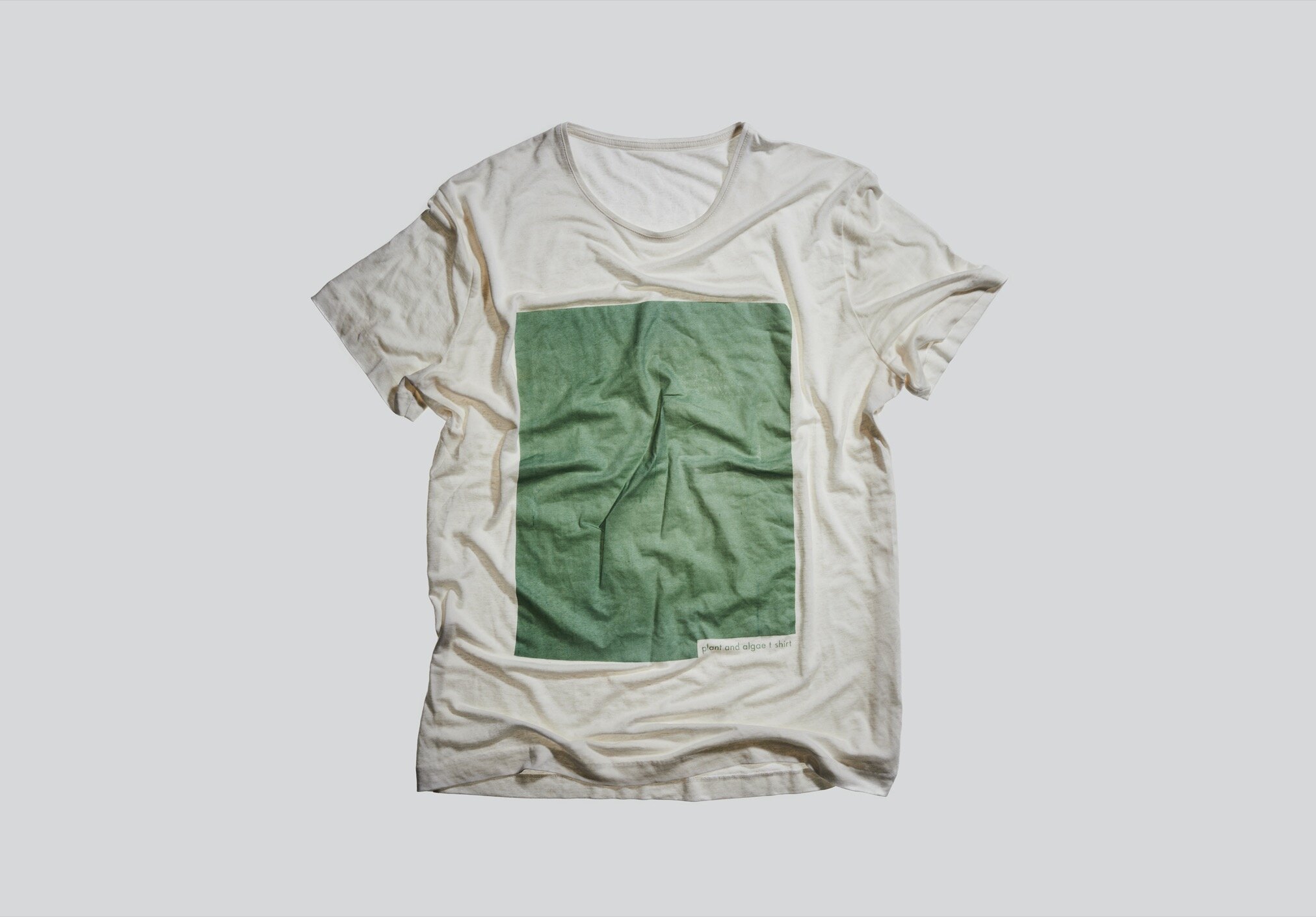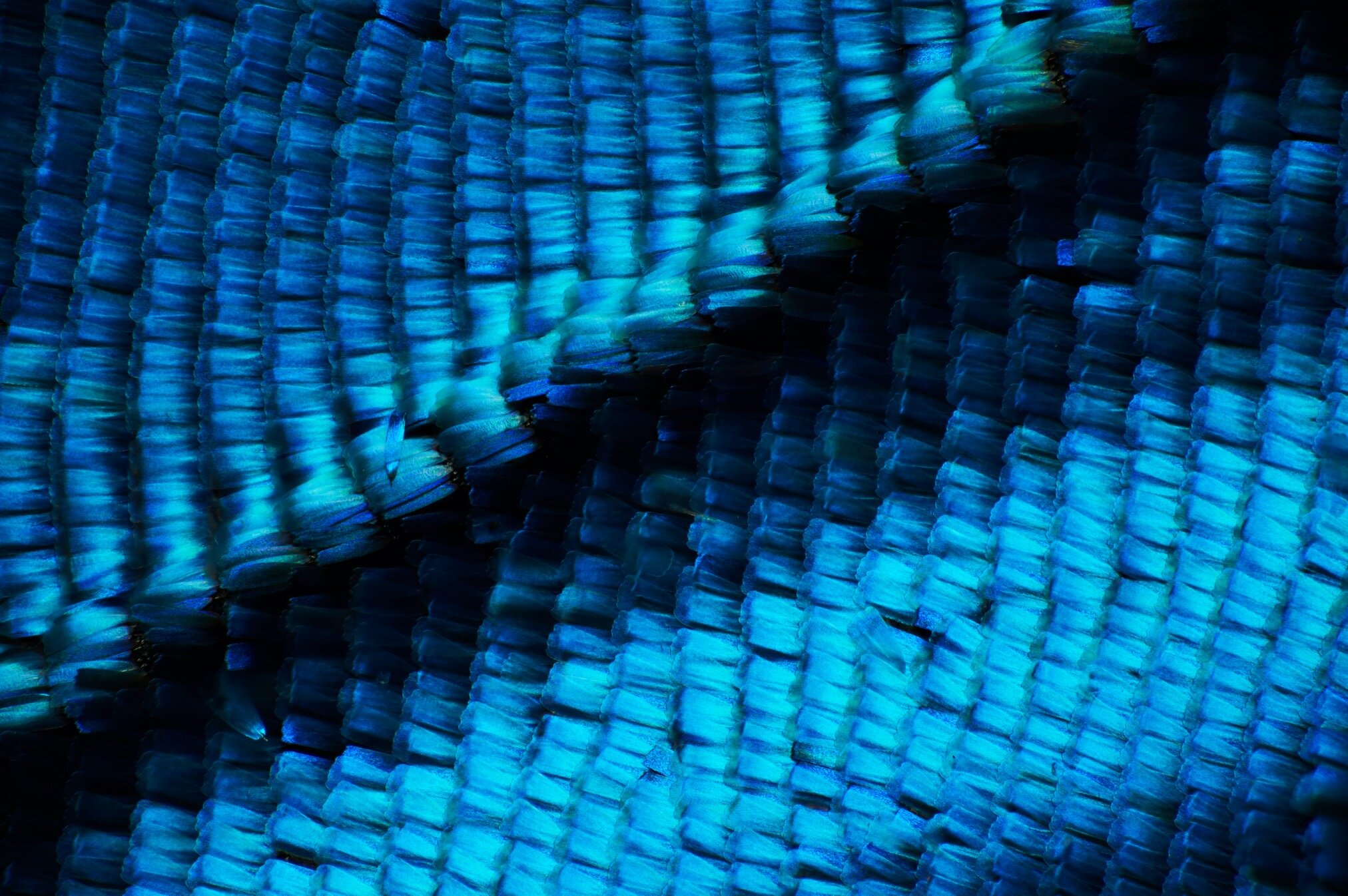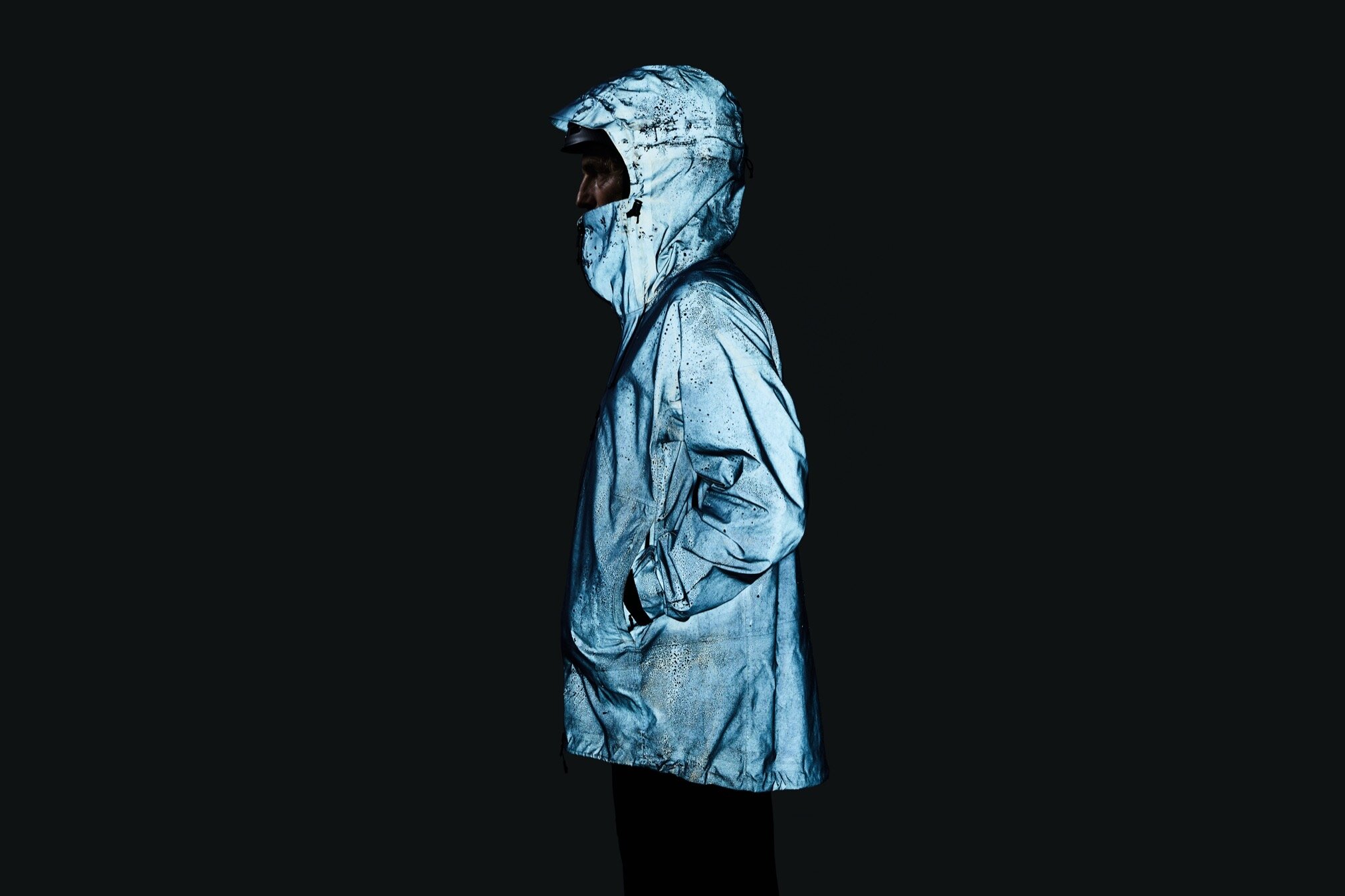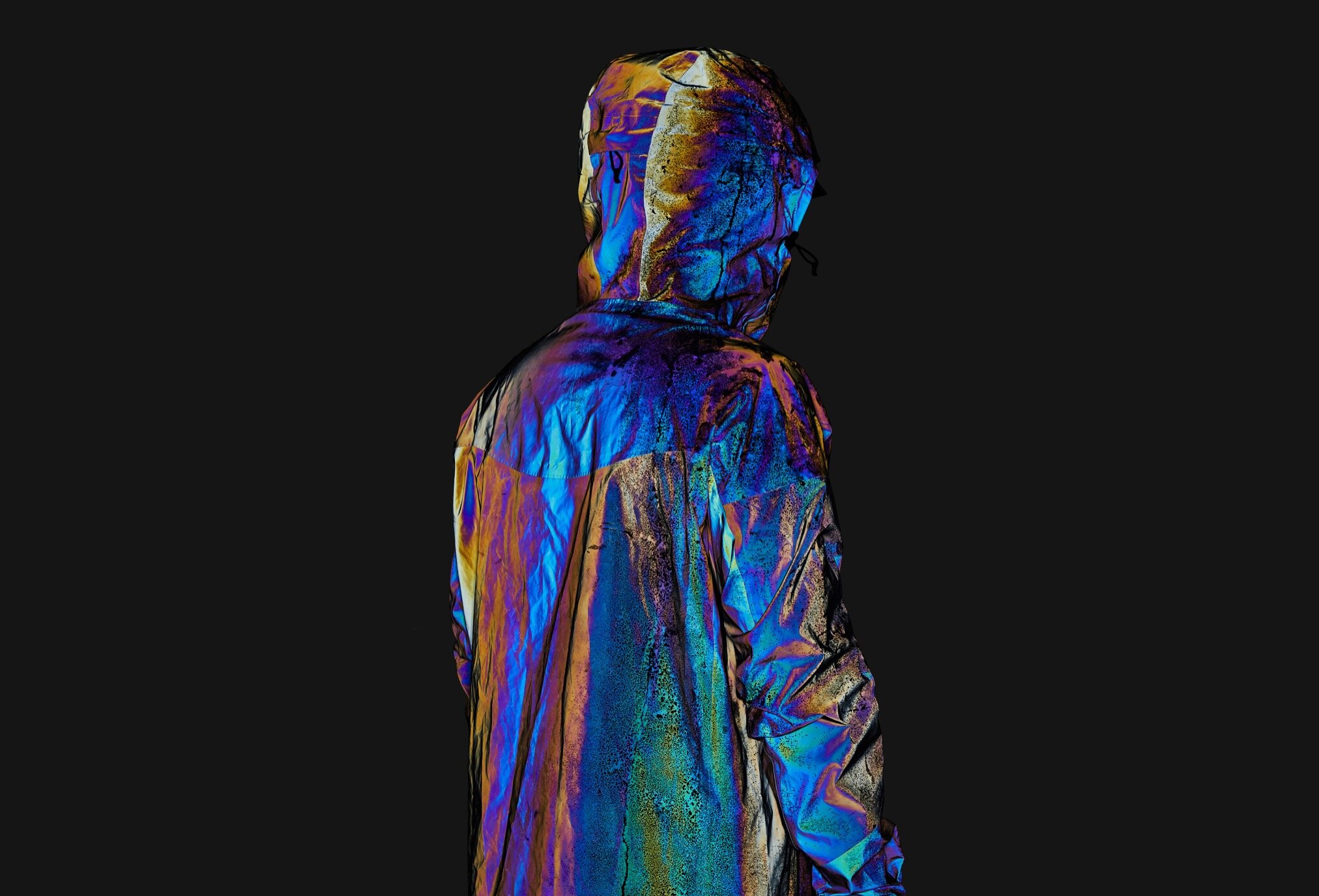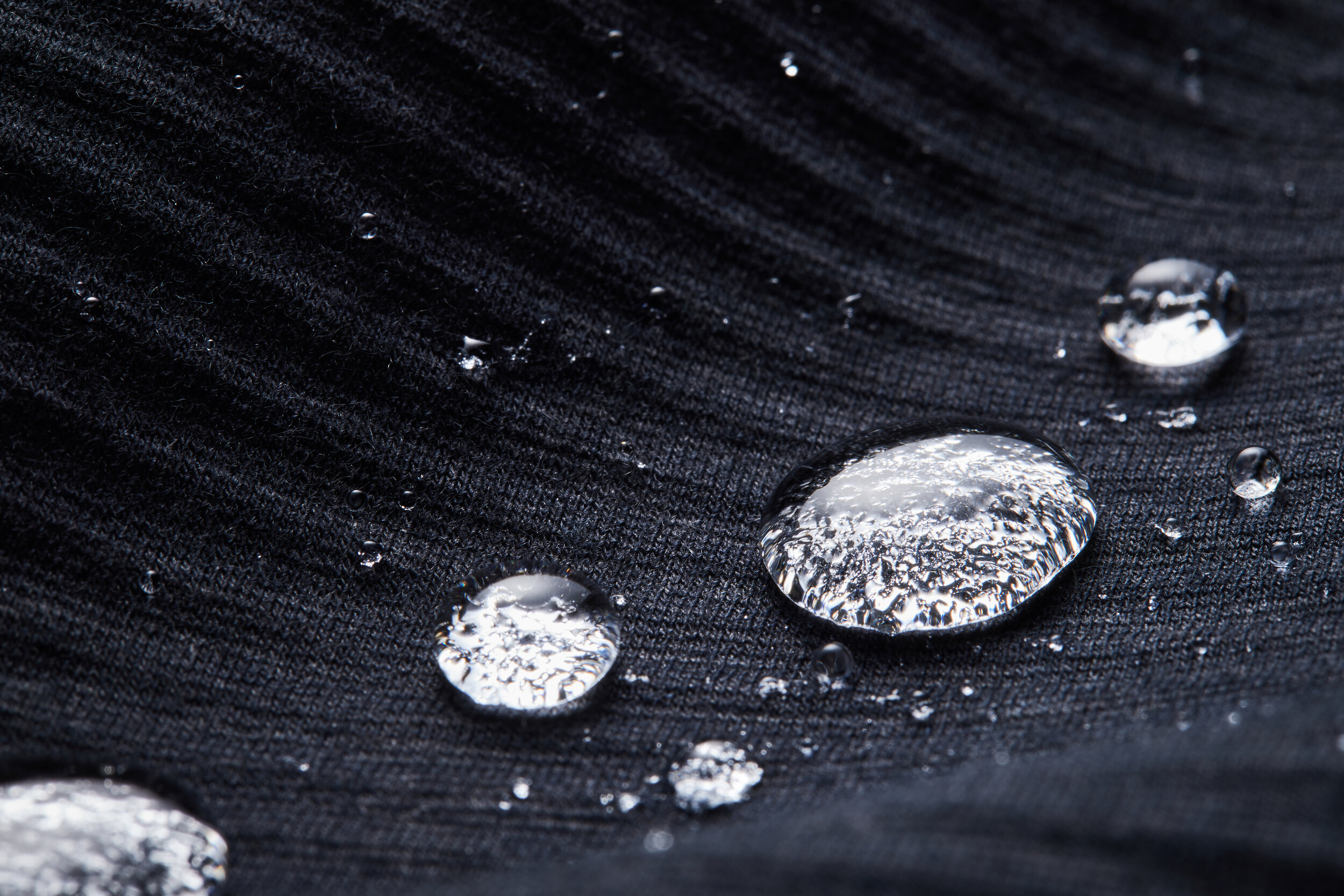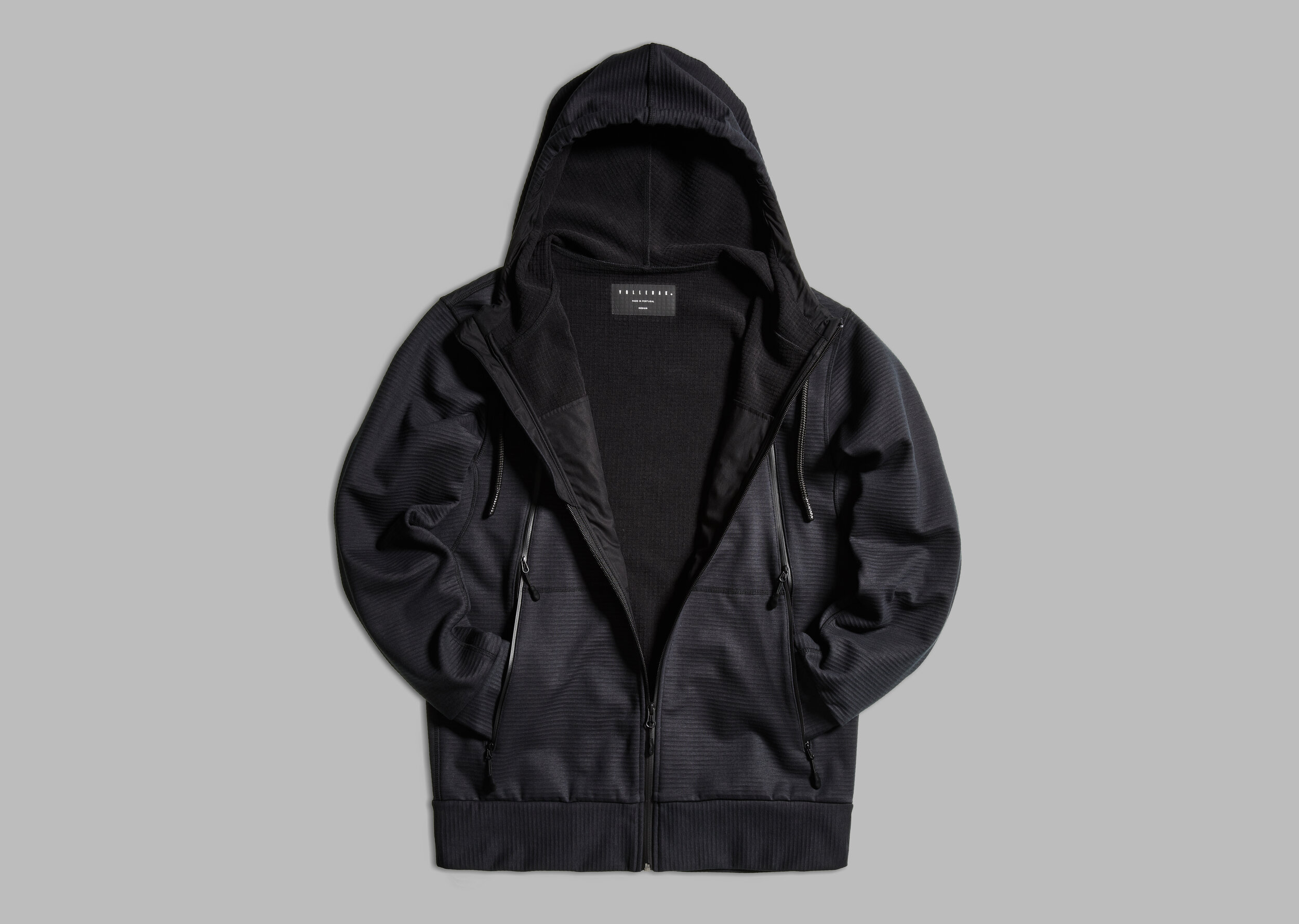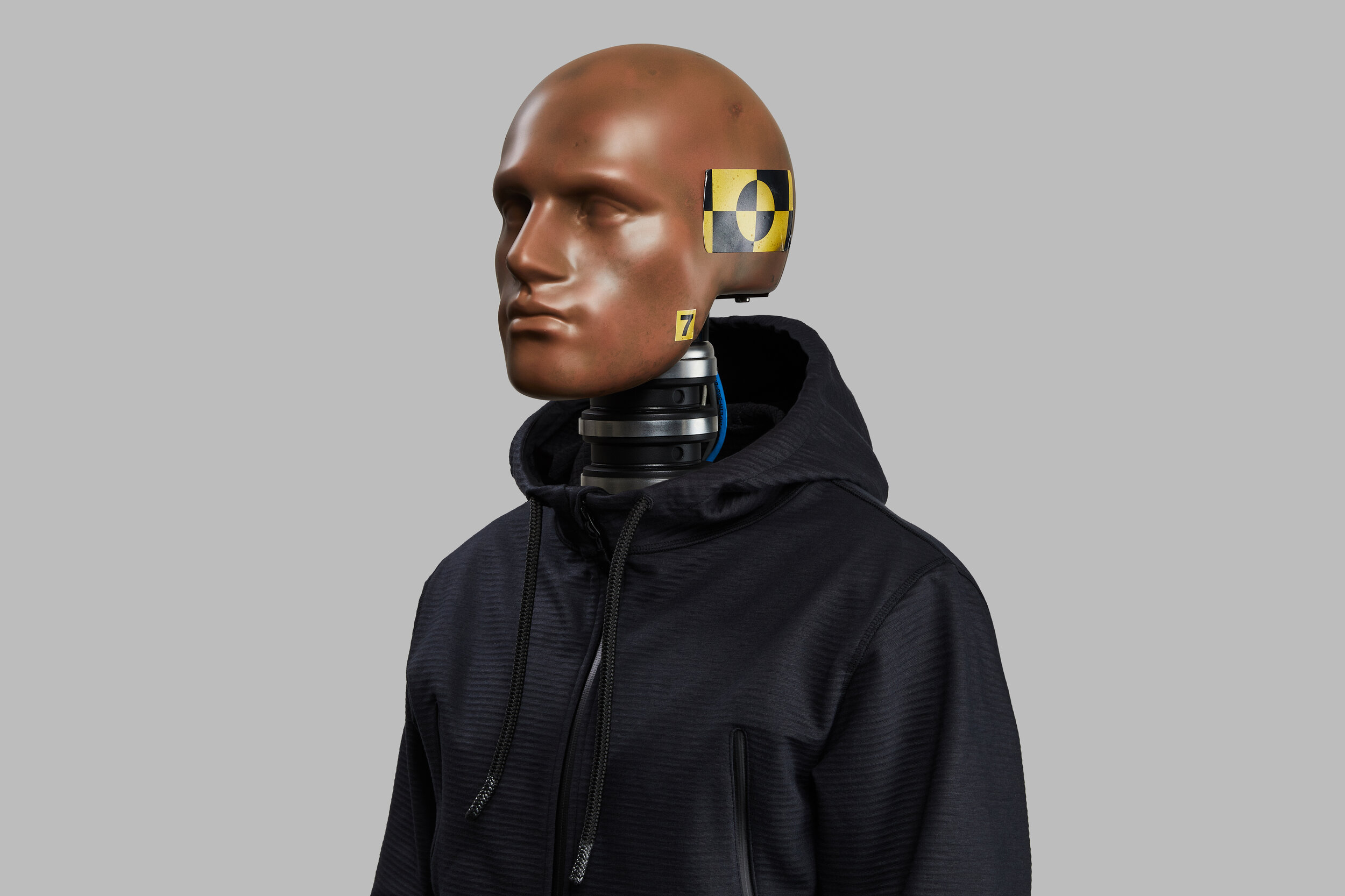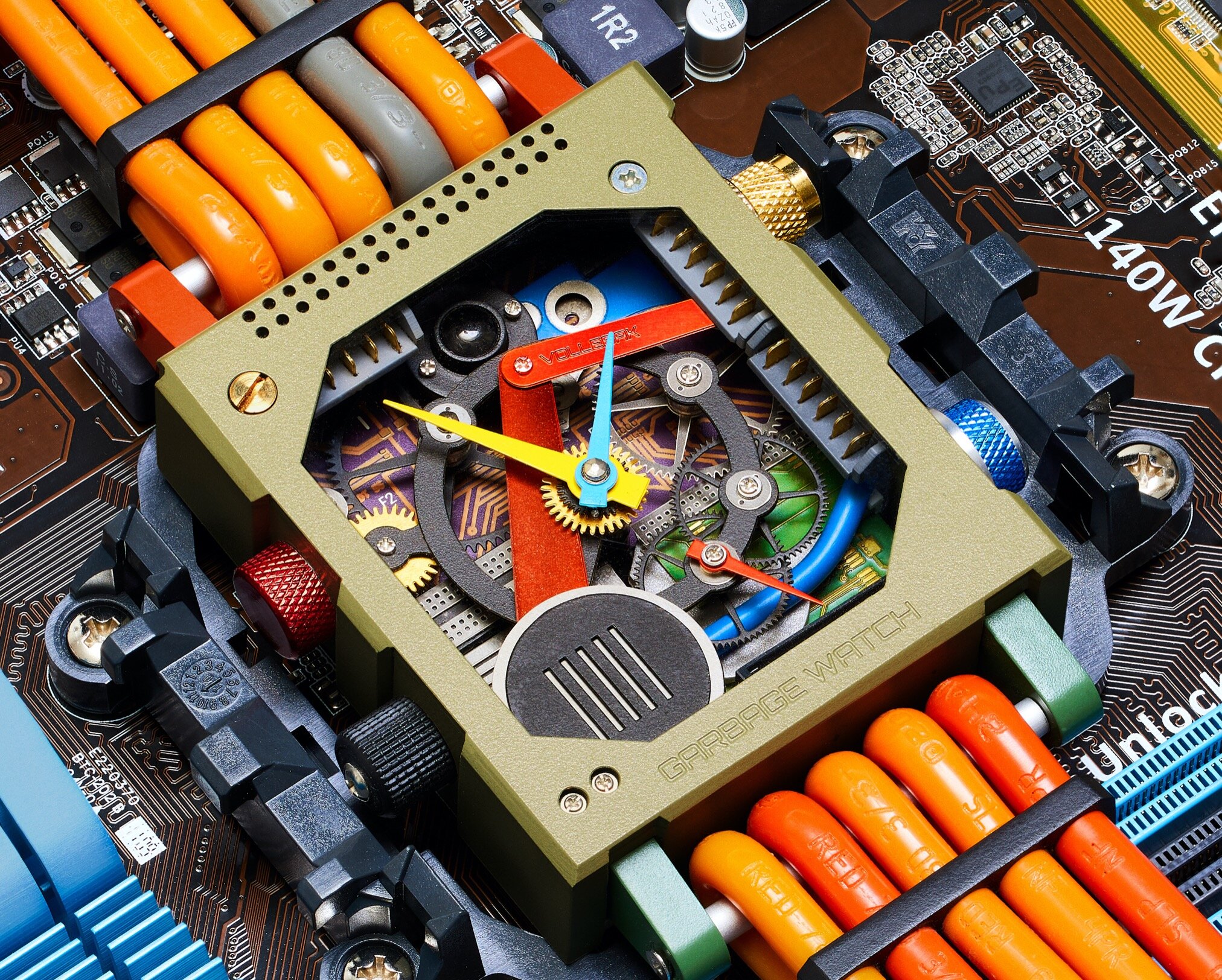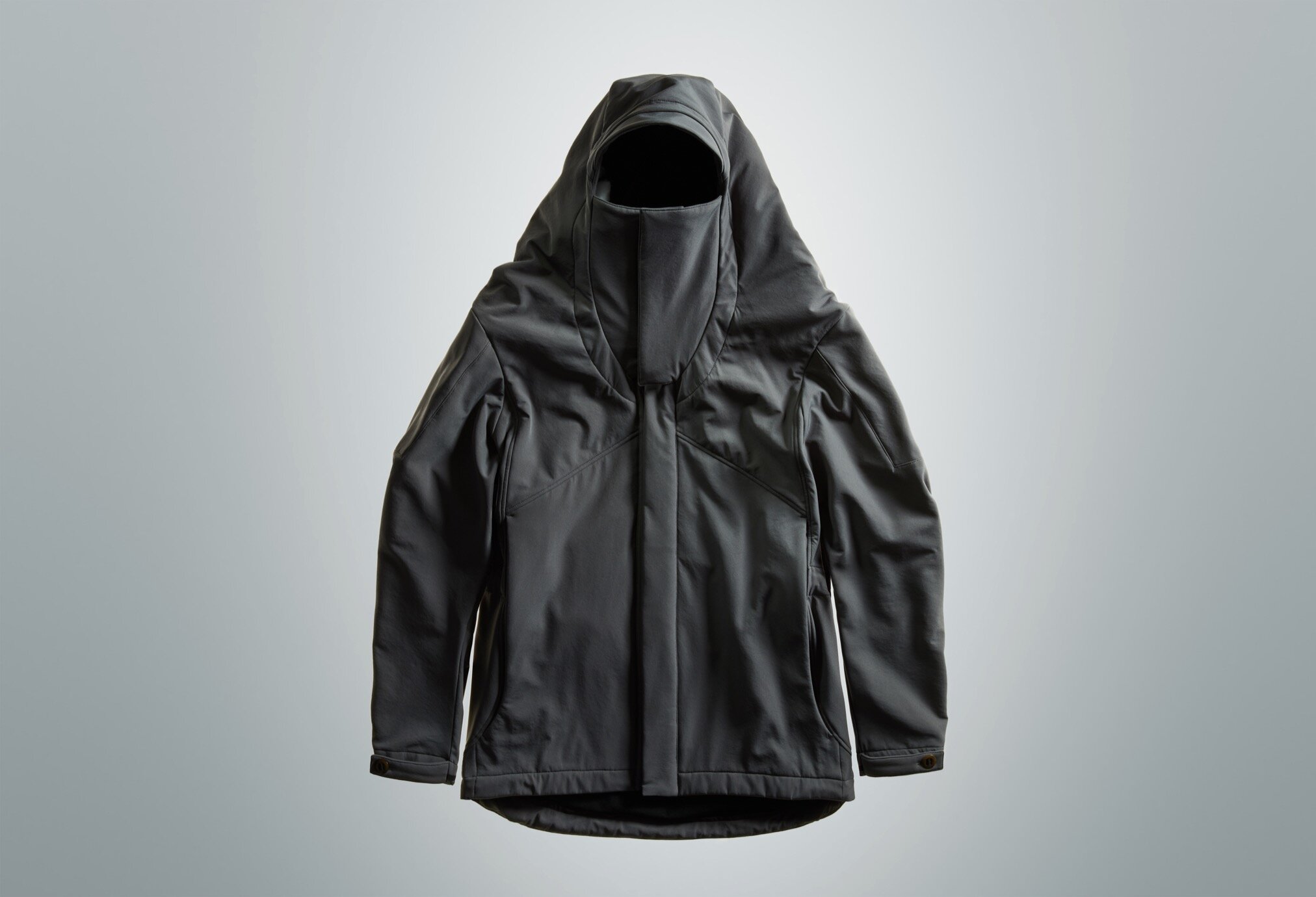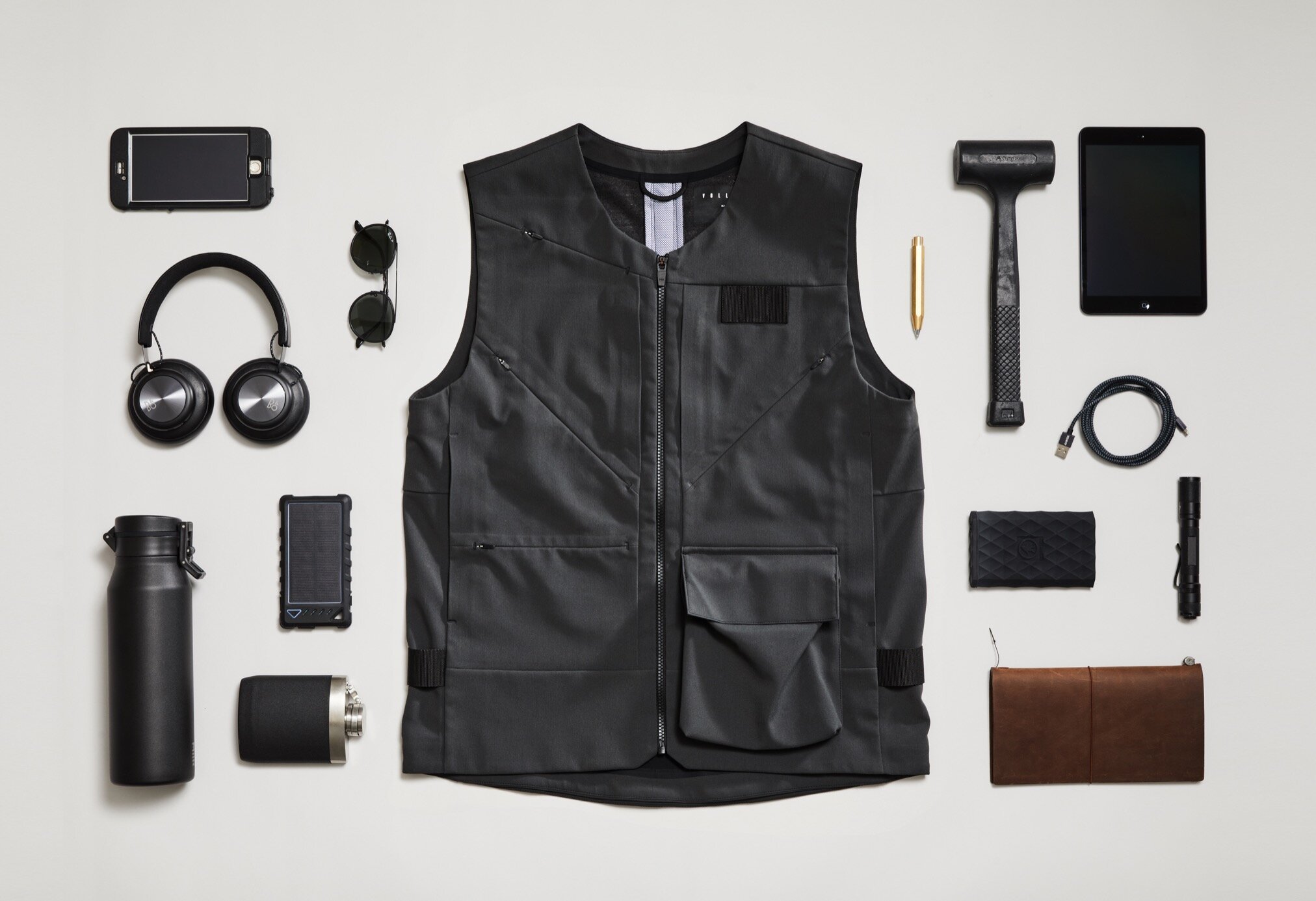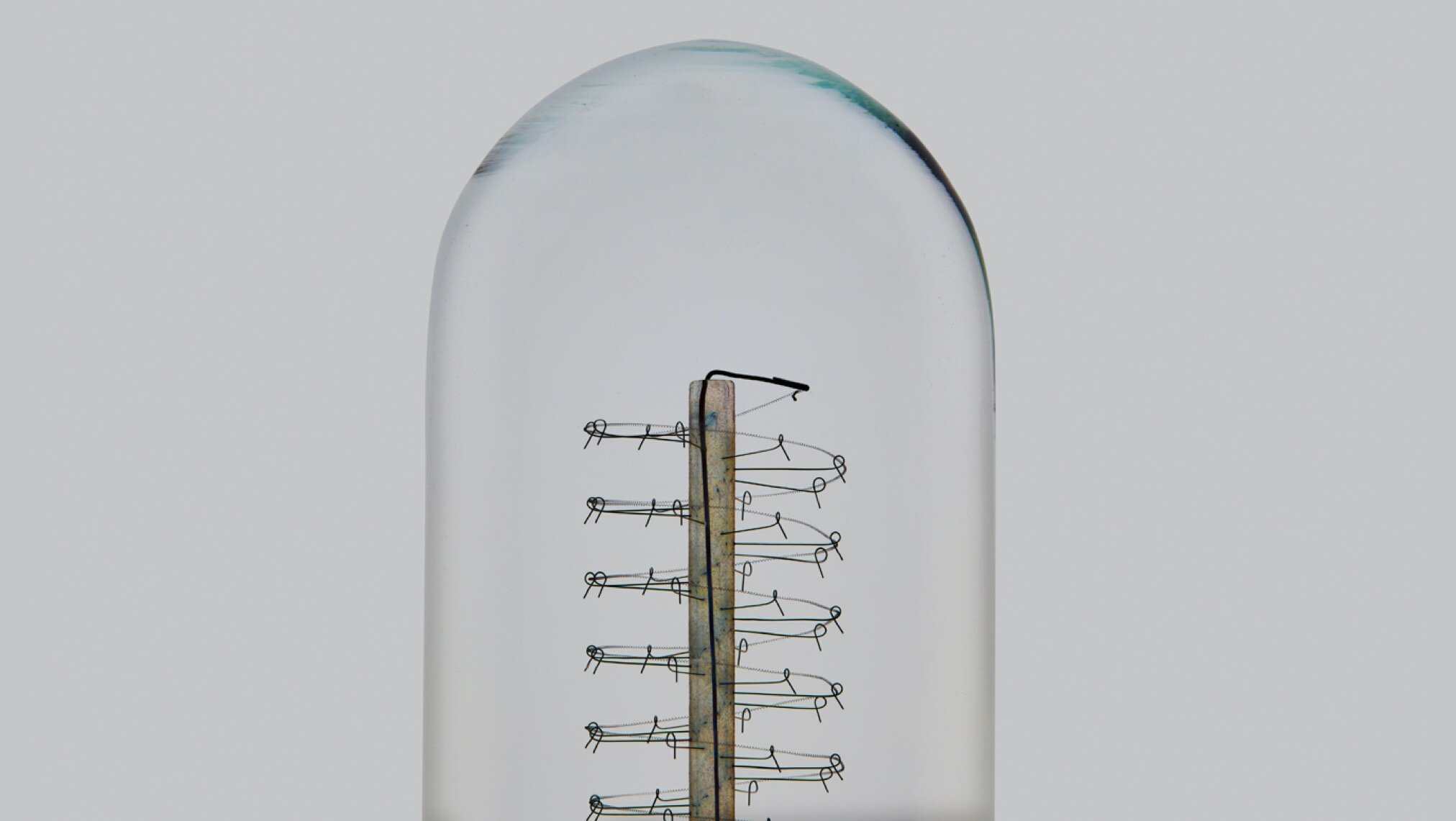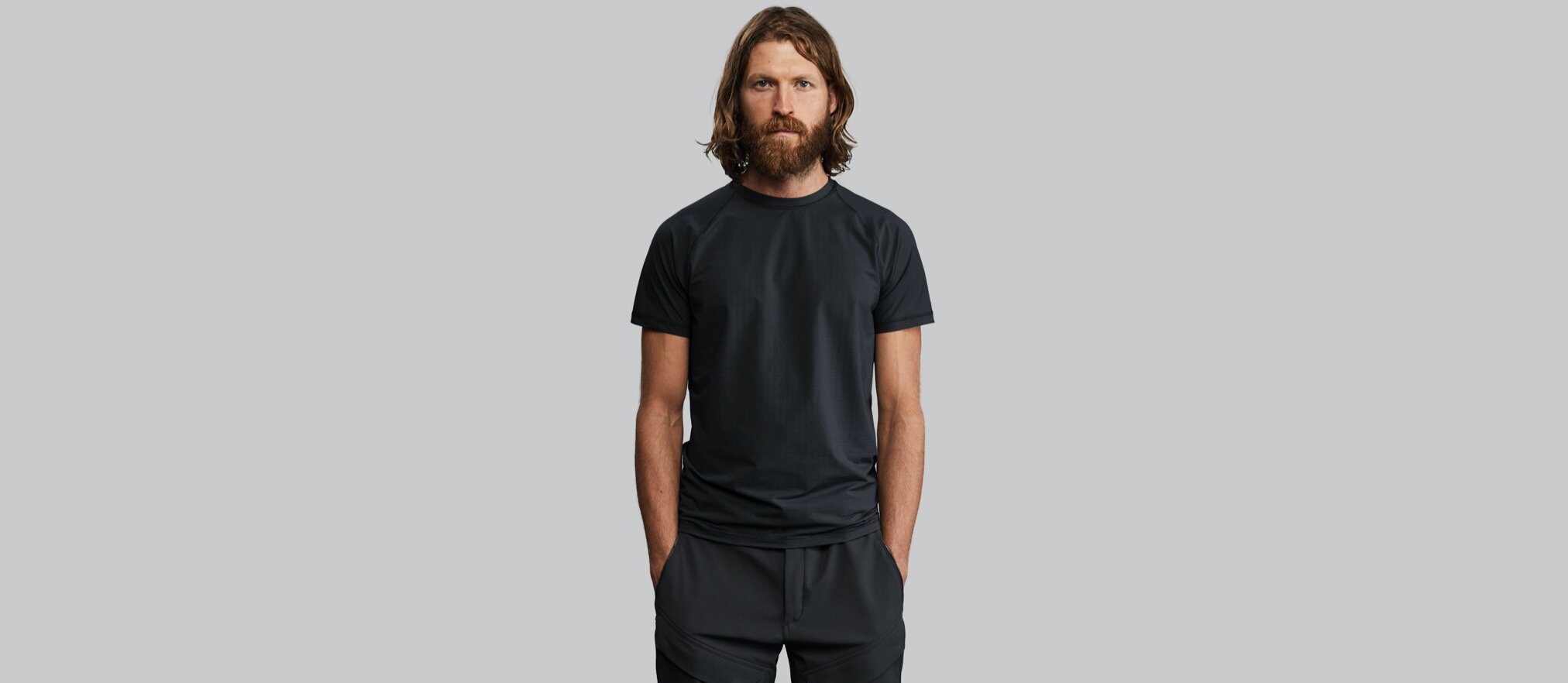Clothing for Martians: Vollebak

At the end of 2019 workers at Elon Musk's SpaceX headquarters could see a big red billboard reading; “Our Jacket is ready. How is your rocket going?”
As a company known for its aim to push space travel and science; SpaceX might wonder who could be faster in developing products made for leaving earth.
The advertisement was put up by UK based brand Vollebak. Founders Nick and Steve Tidball hoped that their teasing message would catch the eye of SpaceX execs and pique their interest in their newly developed sleeping cocoon. The twin brothers describe SpaceX as one of their favourite companies and a big role model.
The brothers both have an urge to push boundaries and try to find solutions for problems that aren’t here (yet). What would a person need on a journey to Mars? What features did a jacket for the prehistoric man have and what can the man from tomorrow learn from it?
Before the question, comes the challenge. Both of the Tidball brothers are passionate sportsmen. The idea for Vollebak emerged due to a lack of real functional gear they could use during extreme races through all kinds of climates. They work to make garments that solve problems they find in their lives. Even though sometimes the challenge is only a mind game.
The idea for the Deep Sleep Cocoon was born from these challenges. How can the astronauts on the long journey to Mars in an unsustainable environment still find total relaxation? In a cabin that is rocketing through space where travellers have to face inhuman light situations, sleep is a necessary thing.
As the name might say, the garment was inspired by a cocoon. The shape and functionality mimic that of a woodlouse, whose exoskeleton helps to protect them from the outside world. The second influence came from space helmets. Combining these fields Vollebak creates a jacket that keeps its roots buried in mother nature but is aiming for Mars.
Many of Vollebak’s products are influenced by the idea of nature and the future of garment consumption. Some use nature to mimic progressive methods of camouflaging or warning like the Black Squid Jacket; while others try to leave no carbon footprint at all and can be returned to the bio-cycle by being buried in the ground once they have no use anymore like the Plant and Algae T-shirt.
Materials used by Vollebak are often crafted in Switzerland by Schoeller, a cutting edge fabric mill that specializes in the sustainable development of textile technologies and technical textiles such as ceramic coating or paroshell, a fire-resistant textile.
The textiles tell-all: Vollebak’s garments are extreme.
Time to sit down with the founders to talk about the origin of the brands’ name, Nobel prize awarded material Graphene and what we can learn from Ötzi the Iceman.
Hello, Nick and Steve. Could you briefly introduce yourself to the Sabukaru network?
We’re twin brothers, designers and athletes Nick and Steve Tidball and we founded Vollebak in 2016 with the mission to use science and technology to make clothes from the future. The clothing we make is based on questions that haven’t been asked of clothing before. Our Solar Charged Jacket is designed to store and re-emit sunlight.
Our Deep Sleep Cocoon is designed to help you sleep in space. Our Relaxation Hoodie is decided to help you relax in cramped and isolated conditions. And our 100 Year Pants are built to survive a century of wear and can even go through fire.
Can you please tell us more about your sport and marketing background? How did these two different traits lead to starting your own fashion business?
Before Vollebak my brother Nick and I worked in advertising together for 15 years, culminating in four years as creative directors at TBWA\London where we designed experiences, events and products for sports and tech brands like adidas and Airbnb. Our work won awards at Cannes, D&AD, Creative Circle and the One Show. We wanted to continue creating stuff people would care about and tell their friends they’d seen, so after that, creating our own brand felt like the natural next step for us.
At the same time we were taking part in some of the toughest races in the world. Running across a desert for 24 hours and through the Amazon jungle made us realise that the kit that was out there wasn’t as progressive or as smart as you were made to believe, and we decided to change this.
Vollebak combines these two worlds. We take personal insights and problems we’ve experienced as athletes and try to find solutions using design.
Where does Vollebak draw the line between marketing and real performance gear? Is there a balance between designing for headlines and publicity and for the usability of a product?
For us there’s a very hard line between marketing and performance. We make gear that tackles the life-threatening realities of adventure sport, like sleep deprivation and a compromised immune system. And we try to find solutions that the outdoor industry hasn’t thought of yet.
In setting such ambitious goals for our clothing, like storing sunlight, or helping slow down your brainwaves, it’s inevitable that we end up with fascinating stories to tell. We take great care in describing the initial problem to our customers, as well as explaining why nobody has attempted to solve it before, and then we tell them how we got to our solution. That’s where marketing comes in.
We tell the story in the most interesting way possible, and in a way that people can understand.
Sometimes our gear starts off not with a problem, but with an innovative material. Graphene has the potential to transform almost every industry from space travel to electronics, so we put it in a jacket, not knowing what it could achieve. When we released the jacket into the world, we uncovered a series of fascinating stories from our early adopters. CEO and adventurer Nikita Gushchin became the first person to use the Graphene Jacket as a life-saving solar panel, while trekking in the Nepalese mountains. But we didn’t start with the stories, we started with the innovation.
Your ideas for new products emerge while you guys are outdoors and run into a problem.
Can you take us down a product lifespan from problem to an idea? What are the story and problems behind some of your most prominent creations?
When we’re coming up with new ideas nearly all our answers come from sport and the outdoors, and we come up with our clothing concepts incredibly fast. But for every product we go on to design, we tackle it from first principles, thinking about what the wearer needs from the fabric, whether that’s extreme durability, incredible stretch, high visibility, advanced waterproofing, or something else.
The clothing we make is based on questions that haven’t been asked of clothing before, and so quantum leaps in technology are required for a lot of our gear – new production methods, or entirely new materials which have never been seen before. While we launch new concepts nearly every month, every piece takes between one and five years to make.
So for example, we came up with the idea for the Solar Charged Jacket while running the Ultra Trail du Mont Blanc in low visibility, and wondered whether our clothing could become its own light source. In the sports world there are other jackets promoted as high visibility and these typically use reflective patches, trims, or materials – so they don’t store or emit light, they simply reflect it. So we decided to engineer a membrane with a phosphorescent compound that lets it rapidly absorb and store light like a plant, then re-release that light slowly as day turns to night. There’s no wiring or electronics involved at all.
Our Plant and Algae T Shirt is the result of an experience we had competing in a six day ultramarathon through the Amazon. At the end of the race everyone put their filthy, completely destroyed kit into a pile and burnt it.
And we wondered whether instead of burning your clothing at the end of these races, you could simply bury it – so we set out to make a piece of clothing entirely out of natural materials that could be buried in the ground and return to nature once it reached the end of its lifespan. The initial idea came from a brutal insight, but the development of our Plant and Algae T Shirt was drawn out over three years.
Neither of your backgrounds are in fashion-design, and your clothes are deeply rooted in science and craftsmanship. What does this mean for your product and design team? What does it look like?
One of the advantages of approaching an industry that you’ve never worked in is you’re not weighed down by the same practices and expectations as the brands that have long inhabited that space. So we were able to enter the apparel space with a totally different perspective, with totally new ideas, and a totally different set of expectations.
At Vollebak we pursue absolute creative excellence, and absolute creative innovation. Over the last four years we’ve pursued this with a small and nimble team. The construction processes for our clothing may be highly complex, but the processes we work to as a design team are very simple. With an unconstrained environment it’s easier to separate the good ideas from the rest.
The building of our gear is an exercise in no expense spared craftsmanship because, while your idea is important, your execution is everything. To do this our design team will work with a very diverse group of contacts. Because our clothes are deeply rooted in material science, we’re consulting athletes and scientists throughout all stages of the process – from when we’re first thinking about ideas, to when we’re developing them and when we’re testing them. That’s how we turn our theories into reality.
Can you please guide us through the process of your garments? How does your work with the design team result in a final product?
We start with problems that people haven’t thought about before, for example how would you sleep the night before racing an ultramarathon? Or if you’re abseiling into a volcano, how do you stop your clothes from catching alight? These are very niche problems that most people in the world will never encounter, but simply by considering them we have to come up with very unique design solutions.
As a result we have to work with partners who are also interested in exploring what the future of materials will hold. But they can come from extremely disparate fields, all the way from academic research, to fabric mills, to military psychologists. These partners are involved as much at the start of the process, as when we’re developing the materials and finally in testing. It’s only by working with both scientists and athletes that we can create the clothes we do.
You have started to put out newer, updated versions of former garments. How and where do you come up with these improvements? How big of a role do the customers and your target audience play in improvements to your products?
A lot of the ways we operate make us more like a technology brand than a clothing brand. In tech you can either be late or early. To be late you’d stay in the lab for the next decade until you’d perfected lightweight armour made from graphene. To be early, you’d put an experimental prototype out into the world and harness the collective testing power of early adopters to improve and iterate.
So we open up our R&D process to our customers and to the outdoors, in order to accelerate their innovation and discovery. By taking these materials out of the research labs and into the field, we see our gear tested in the extreme scenarios for which they’re designed, and in some of the most remote parts of the world.
This approach has led to some fascinating discoveries. For example, if we hadn’t released early, we might not have discovered that you could strap our Graphene Jacket to a camel’s belly in order to absorb its heat. I don’t know if anyone has ever put a camel in a lab before. But with our method we don’t need to!
So we always encourage scientists and adventurers to get in touch to let us know how they’ve put our gear to the test. We don’t run automated surveys to measure customer satisfaction rates, just as we don’t use bots to answer questions from customers – the tech in our clothing may be highly advanced, but we value building personal relationships with our customers. It gives us amazing insights into what people think of our clothes and brand.
Do you see Vollebak as a fashion brand at all, or would you position yourself somewhere entirely else?
I see ourselves as a brand answering a call to make the future of clothing, based on the extreme challenges people face on this Earth and off it. 2020 has highlighted the importance of designing clothing for the needs of the next century rather than the next season. So we’ll continue to work with the timescales of innovation rather than the timescales of fashion – and leave it up to our customers how they want to categorise us.
Let's talk about your latest product: The Full Metal Jacket. Could you unwind the 11km of copper and guide us down the process from the very first idea towards the final garment?
The Full Metal Jacket started out with our fascination with copper. Copper has a long history in innovation, and it’s properties are extraordinary. Its ability to kill bacteria and viruses, and to conduct heat and electricity without a power source, make it an obvious starting point for the future of intelligent and disease-resistant clothing.
We were originally inspired to create clothing out of copper after watching Bill Gates’ TED Talk about pandemics. Around the same time we were talking to friends in the aerospace industry, who mentioned that astronauts’ immune systems are compromised in space, and so we started thinking about anti-viral fabrics. But mostly we wanted to experiment with conductive materials because we’re working towards a future of exoskeletons and integrated monitoring, all of which will require power distribution across a fabric.
Our aim with the Full Metal Jacket was to prove it’s possible to make clothing almost entirely out of copper. Our starting point was to talk to fabric mills and ask them some very unusual questions about what they could do with copper. There’s a reason this is the first jacket to be made mostly from copper, and that’s because the process of turning metal into wearable fabric is highly complex. It’s even more challenging when you turn the fabric into a high-performance material as we’ve done here.
After we’d worked through many different iterations of the material, and of the jacket, we decided to accelerate our final construction phase to launch a limited edition run of the Full Metal Jacket in May 2020. Our next step is to explore what form and function would best make use of copper’s incredible properties. For example, we want to investigate the benefits of wearing the fabric much closer to the body, and it’s potential for transmitting information from sensors to displays.
You are working with materials like copper, carbon fibre or graphene. All of these are not commonly used in fashion. Do you test these materials on your own, or do you work together with producers of material science, chemicals, etc.?
Metal may not sound like an obvious candidate for the future of clothing. It’s incredibly expensive, has no real precedent in clothing beyond suits of armour, and there’s no established supply chain. But we’re exploring its potential because to make intelligent and disease-resistant clothing you need to start with base materials that can do things that normal materials can’t.
Everything from exoskeletons to integrated monitoring and intelligence will require power distribution. So that’s why we consider making clothes out of naturally conductive materials as the first stepping stone towards intelligent clothing. You can think of copper as a platform on top of which other innovation can be added – a bit like an operating system in a computer.
We wanted to see whether it was actually possible to start making clothing almost entirely out of copper – because you can’t wear a theory.
It’s exactly the same reason we’re making clothing out of graphene.
At the same time as working on the material building blocks, we’re also looking at what type of intelligence we want to layer on top of it.
At the moment these are separate projects. But over the next few years we’re going to be bringing those projects together.
How much of a balancing act is it for you guys to make a jacket that serves the most severe conditions and situations but also is suitable and comfortable for people who'd wear it in their everyday 2020 lives?
When we’re designing our gear, we’re always balancing its future-facing benefits with the benefits it could have right now. We also think about how it would fare in an extreme environment like a desert, a jungle or even outer space. These are all places where clothing has to do more to earn its keep, and so ultimately we end up with more and more ambitious clothing.
We do this because we’re interested in human longevity, and because we want people to feel protected in a world which is increasingly exposing them to dangers like pandemics and wildfires. Clothing is our primary defence mechanism against danger, so we’re trying to make gear that looks and feels like normal clothing but has advanced performance built in.
Our Full Metal Jacket is a good example of this, and our 100 Year Hoodie is another really good one – the hoodie looks and feels like any other hoodie in your wardrobe, but can withstand rain, wind, snow, fire and even time.
It’s always a challenge to achieve both comfort and crazy performance capabilities, but each iteration always brings us closer to that perfect balance.
Your newly announced Garbage Watch, which is set to be released in 2021 uses "tech the world threw away in the trash". For the watch you’re using motherboards of PC, microchips from smartphones or wiring from TV. How difficult is it to adapt technology waste to "tech wear"?
We announced our Garbage Watch very early on in its development, and it’s our intention to share its R&D story as it evolves. So we don’t know yet how difficult it is to turn e-waste into tech wear. That’s the challenge. But as two industries collide – technology and clothing – we see it as our responsibility to consider how technology and clothing should be treated at the end of its life. Following the announcement, we’re now working with expert watchmakers, e-waste recycling organisations and tech companies to help us bring the Garbage Watch to life.
Are each of these reassembled pieces still fulfil their actual purpose, or is the motherboard now turned into "only" a good-looking part of a sustainable watch?
We've taken an ‘inside-out’ design approach with the Garbage Watch, making the functional inner workings highly visible in a similar way to how the Centre Pompidou is constructed. Our aim was to reframe an often invisible and hazardous end of the supply chain, and make people think deeply about the impact of treating their wearables in a disposable manner.
We are still exploring which will be used for aesthetic and which will be used for their existing functionality.
You talked a lot about the future of fashion throughout the whole interview. But as the saying goes: To understand the future, you have to look back at the past. How much do you adapt this in your work, do you even have to?
We always look back at the way clothes have been worn in the past. But clothing has been used the same way for tens of thousands of years, so we’re not looking back at previous seasons, but different ages entirely. Ötzi, the Iceman, who lived between 3400 and 3100 BCE, was discovered to have worn clothes made out of bark, deerskin, wood, and grass. When he died his clothes just biodegraded in the ground.
When you look at Ötzi from the perspective of sustainability, you can see that the world is going in entirely the wrong direction. Clothing is still designed with the same function, which is to keep people warm and dry. But now much of it is based on cheap fabrics and cheap labour, at the same time as creating massive amounts of landfill. We need to get back to clothing that lasts as long you do, and simply biodegrades when you die.
Where does the name Vollebak come from? What‘s its meaning?
Vollebak is Flemish for ‘going all out’. We think of it as a willingness to go past the point most people consider fun, and into the moments where you find out who you are. Over the last 30 years action and adventure sports athletes have pushed human performance further and faster than at any point in history. Whether speed climbing the Eiger, running across deserts, or surfing waves bigger than most buildings. These leaps require extreme commitment. And we wanted a word that captured that feeling.
It’s no accident to achieve the amount of awards that you guys have. Congratulations on that. What do you think fascinates people and the media about Vollebak?
Our singular focus on hardcore innovation is the thing that truly differentiates Vollebak. As a result we’ve won innovation awards from TIME and Fast Company and been compared to Tesla and elBulli for our radical commitment to what comes next.
I think one of the most fascinating products we’ve ever made is the Deep Sleep Cocoon, which is designed to help you sleep in space. While deep space travel will be the greatest adventure humanity has ever faced, it’s far from a vision of the future. Astronauts sleep in cupboard-sized sleeping bags attached to the wall and experience 16 sunrises a day. Understandably, 75% of crew report using sleeping pills which induce sedation rather than sleep. So we designed a self-contained microhabitat inspired by the exoskeleton of a woodlouse, which you can fully fasten over your head. The cocoon strips out light like an isolation tank, has space for noise cancelling headphones, reduces your exposure to unnecessary stimulus, and while you can see out, no-one can see in.
Whilst we're designing clothes for the journeys we might need to make beyond this planet, we’re also committed to designing solutions to help humanity thrive here on Earth. I think one of the most interesting things we do is encourage people to think deeply about the future of our species and our planet. By being really explicit about what our gear is designed to achieve we’re helping to change people’s behaviours around clothing altogether.
For example, we wanted people to consider what happens to their clothing at the end of its life, so we built the biodegradable Plant and Algae T Shirt which decomposes in soil – nobody will ever forget the day they buried their t shirt at the bottom of their garden. We’ve also designed the 100 Year range which is capable of outliving its owner, and can be passed down from generation to generation. By dramatically increasing the longevity of clothing, we can encourage people to buy less and wear it for longer.
What’s next for you guys?
We’re going to continue to make gear that feels like you’re buying it from the future, because the future of clothing is going to arrive faster than anyone imagines. Right now we are on the cusp of a revolution. Historically clothes have been used to keep people warm, dry, cool and alive – they are essentially tools to help us maintain stasis. We’re still wearing the same cotton the Egyptians wore, and whilst other industries are progressing rapidly, in clothing we’ve not moved forward.
But over the next 50 to 50,000 years clothes are going to be used to increase the plasticity of human life. Rapid advances in material technology, biotech, sports science, space travel, and the understanding of human psychology are combining to create the perfect conditions for this revolution. Intelligent clothing is one of our long-term ambitions. And our plan is to be the ones helping drive this forward.
Thank you for your time!
About the author:
Peter is a writer and editor who has devoted a lot of his activities to the Japanese culture. Partially located in Tokyo he academically studied many aspects of the Japanese society and culture to get a better understanding of Japan.


